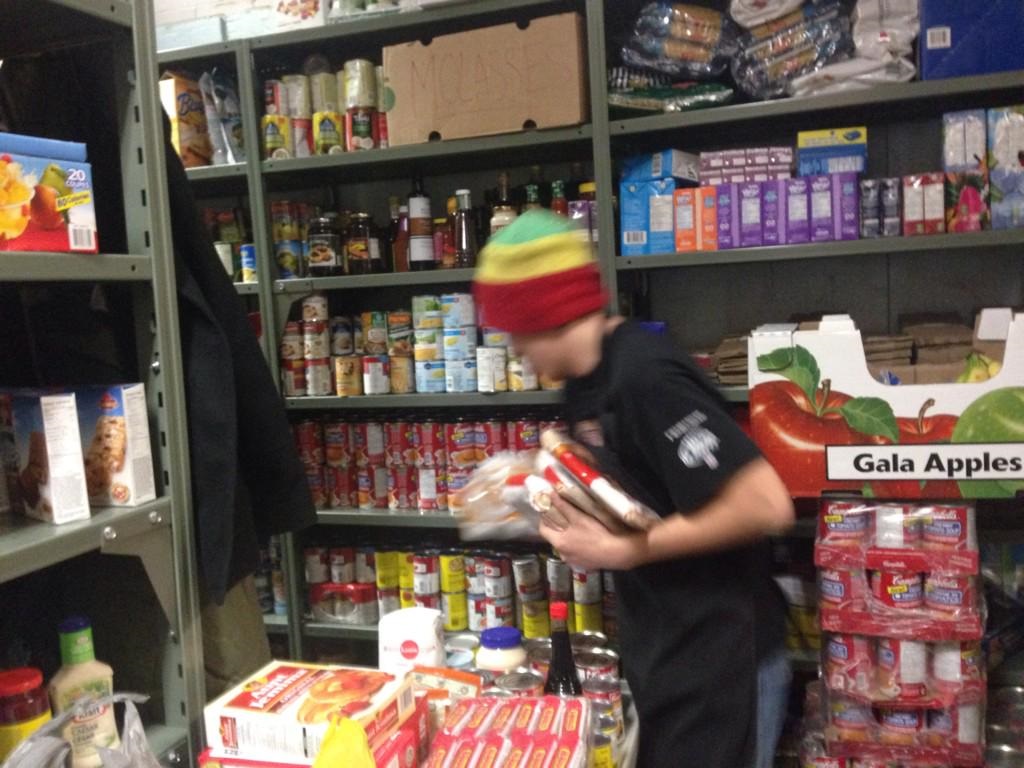People who lack reliable access to sufficient, healthy food cost the health care system much more than individuals who are able to put good food on the table, according to a new study published Monday in the Canadian Medical Association Journal.

The study, which examined nearly 68,000 adult Ontarians over the course of a year, found that people who reported having trouble getting food on the table ended up using health care services – such as doctor and emergency room visits – more often. On average, a moderately food insecure household reported health care costs that were 32 per cent higher (working out to an extra $455 per year) than other, secure households.
The costs got higher the worse the food insecurity was: severely food insecure households cost the health care system an extra $1,092 a year on average.
“So the overwhelming message here is food insecurity is a very potent predictor of somebody’s health and of their health care costs,” said Valerie Tarasuk, a professor in nutritional science at the University of Toronto and an author of the study.
Even when controlling for income, education level and homeowner status, factors which are all often associated with a higher incidence of health problems, Tarasuk still found a link between food security and health.
And food security is a common problem in Canada: 12.6 per cent of households in 2012 reported worrying about not being able to feed their families, having to buy cheap, less-nutritious food, or occasionally skipping meals.
READ MORE: Going hungry – digesting Canada’s food security problem
Tarasuk’s previous research shows that food insecurity is associated with a range of chronic diseases, from back pain to diabetes, as well as mental health conditions.
“Almost every condition that we know of is more prevalent among people who are in food insecure situations,” she said. And people who are struggling to put food on the table are less likely to be able to properly manage those conditions – which might contribute to them using health care services more often, she said.
She used the example of diabetes. “If someone is in a food insecure situation, they’re less able to follow the diabetic diet. They are probably unable to afford the things they need, the paraphernalia for blood glucose testing. Unless they’re on social assistance, it’s very likely that they don’t have drug coverage, so if they’re prescribed medications to manage their disease, they’re probably less able to afford those as well.”
As such, they might be more likely to develop complications.
And what’s the total cost of food deprivation to the health care budget? Tarasuk said it’s very hard to estimate, but she thinks it could be high: “Just this differential that we’ve charted would be costing the Ontario government somewhere upwards of a billion dollars in the course of a 12-month period.” More research is needed to determine exactly how much food insecurity costs, she said.
Not just health problems
People who are having trouble putting food on the table are likely to be facing other severe problems in their lives, said Tarasuk. “By the time somebody’s struggling to put food on the table, they’re probably also struggling to pay their rent, to pay whatever other bills they’ve got. They’re probably making compromises financially all over the place. And they’re stressed beyond belief. They’re trying to figure out how to resolve that situation.”
The solution is public policy directed at reducing food insecurity, she said. “We’ve now documented this is costing the health care system a lot of money.”
“At a time when governments across this country are trying to cap health care spending, we’ve identified a subset of the population that at the extreme are burning up more than double the health care dollars as the rest of us. Why? Because they can’t afford to put food on the table, because they’re in a circumstance of that kind of deprivation. I mean, that’s crazy.”
Putting food insecurity on the table
At least two organizations are currently attempting to make food insecurity an issue in the upcoming federal election. Food Secure Canada, an advocacy organization, has asked candidates to pledge to work to develop a national food policy.
The Dietitians of Canada, a national organization representing dietitians, is also calling on political parties to come up with a strategy to address food insecurity.
“While often dietitians are in the news talking about snacks for your kids and back to school, the reality is that for many Canadians, that’s not their most pressing problem. Their most pressing problem is finding something to put on the table,” said Kate Comeau, a dietitian and spokesperson for Dietitians of Canada.
Dietitians of Canada has sent letters to all party leaders, asking them to explain the steps their party will take to reduce food insecurity. As the letters were just recently sent, Comeau has yet to receive responses, she said, but the Liberal Party has indicated their interest.
“We really believe that food is a human right. This is something that everybody should have access to: safe and nourishing food,” she said. “And we recognize that the most recent numbers are telling us that one in eight Canadian households are experiencing food insecurity, that they don’t know where their next meal or source of food is coming from. And that’s something that all Canadians, they shouldn’t have that stress.”



Comments